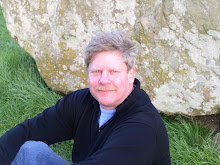Water, Water, Everywhere but.Part one in series.
Why would I want to start off my blog Brett Talks Tech with a series on water, water collection, storage, and purification? Besides the fact that it is the foundation of life itself and, as that, constitutes the beginning of just about everything?
First. World history is filled with great civilizations that used simplistic but highly technical methods to carry water to their citizens and crops, and to harness the power of that water to work for the good of their people and future.
Second. Only about 1 percent of the worlds water is usable with over 97 percent salt (sea) water. The controlled use of water goes back to 8000 BC, and early Egyptian records describe purification methods even then.
Water management provides electrical power, transfer of goods through rivers and waterways, and many uses in manufacturing, food and beverage, and entertainment.
Third. It will be technology that squeezes water from rock and soil on distant planets for our next generation of planetary explorers. Technology offers our ever-thirsty world fresh water, from desalination plants to high tech ultra-violet purification methods.
Most Importantly. Water is necessary for life, period. While we can go for up to weeks without food, in contrast that in days, without water our bodies will begin to suffer severe consequences and death.
Every home, every family, should have a water collection and storage plan in effect no matter how big or small. Why?
Emergencies. Plain and simple; the ability to have clean, fresh drinking water for you and your families’ disposal is one of the most important “needs” we have (along with food in our stomachs and a roof over our heads).
In an emergency where you are required to stay put in home, having a supply of water available will be important for many reasons.
One of the things that would be most important in an emergency is too maintain your home as “normal” as possible. If water is unavailable for even flushing a toilet, having the ability to “flush” down using a bucket of available water is actually a blessing.
Although I have a deep well with excellent quality and taste, there have been times when we had to do without water due to lightning strikes, broken water pipes, or power loss.
Having had these experiences, I decided that I needed to be water-ready at all times. This led to research on water collection and storage, which caused me to research water purification methods, which caused me to research, oh so much more, that I will share in future parts of this feature.
So Lets start with Collection.
A typical home uses about 50-60 gallons of water a day.
A typical family of four uses about 87,000 gallons of water a year.
The standard collection rate for rainwater is:
Square footage of roof times .6 times annual rainfall in inches equals minimum collection. (Square footage X .6 X annual rainfall).
OK, I live in Connecticut, Connecticut has an annual rainfall of 44 inches.
I have roughly 1500 square feet of roof. Using the above formula.
1500 X .6 X 44 (inches annual rain) equals 39,000 gallons of water.
39,000 gallons that I do not need to pull from my well, saving my water supply and electrical costs of pumping!
Almost half of what a typical family of four uses in a year!
You can search your state and find your own annual rainfall.
Just to put things in perspective, Phoenix, Arizona has an annual rainfall average of just over 7 inches a year. Using the above formula someone living in Phoenix (with 1500 sq’ roof) can collect about 6,300 gallons of water a year. More then enough for a small
vegetable garden, flowerbeds,
Koi pond, washing cars, or any other use you might think of.
My point is simply this. No matter where you live, no matter how small or big your home is, there is a tremendous amount of water to supplement your own well water, or city water usage (and costs); and to have use of water even during citywide water restrictions. And yes, to have that source of water during any emergency that might present itself to you and your family.
In part two of Water Collection I will talk about different methods of collecting water from a barrel to cistern. I will also talk about products currently available and what to look for and I will be providing tips on proper bases and piping for uses everywhere around your home and property, I will also be covering water purification for emergency and/or household uses.
This is the end of part one












